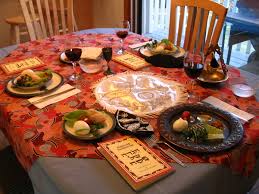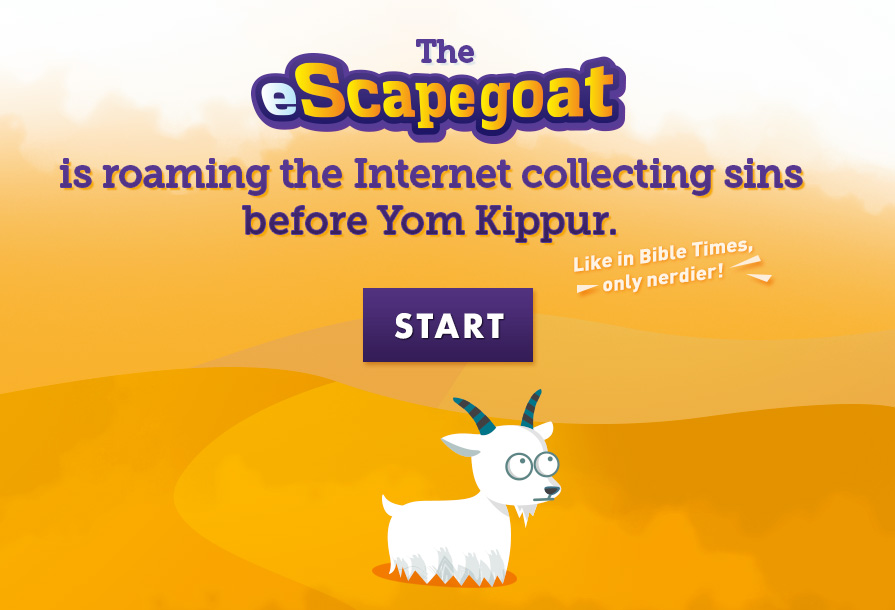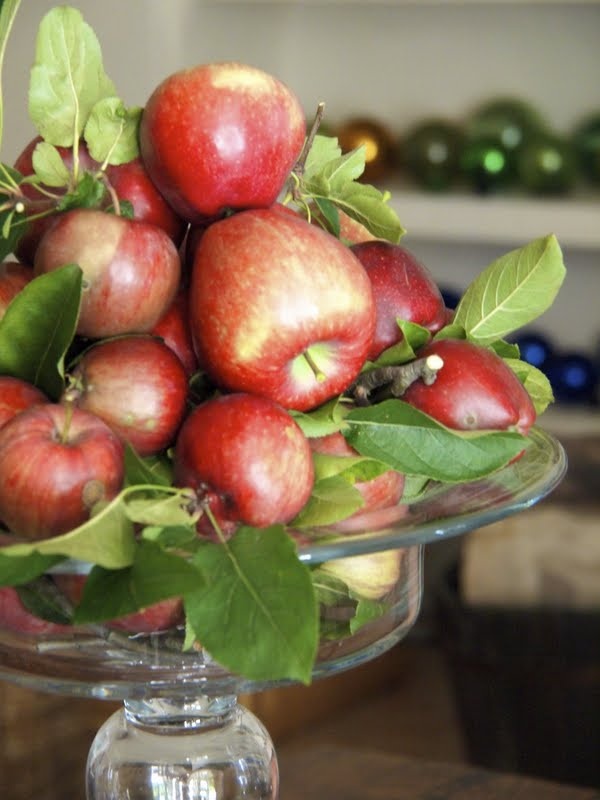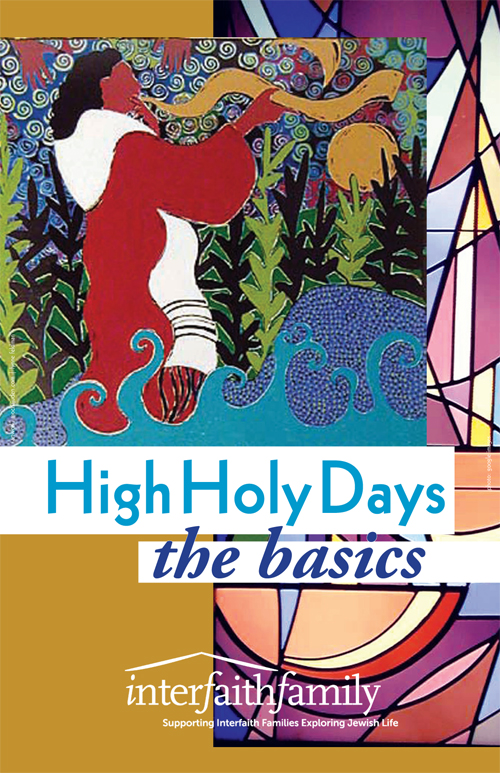The holidays can be tricky for interfaith families. There is a lot to navigate regarding upholding family traditions and customs while at the same time not excluding or disregarding any family members and their beliefs.
At Passover you may be hosting or attending a Seder with close or not-so-close non-Jewish relatives; sometimes it is difficult to anticipate what is appropriate or what some may find offensive.
InterfaithFamily is a great site that provides information and resources on the various Jewish holidays, as well as helpful tips and guidelines from professionals about how to celebrate holidays and special occasions while also respecting and acknowledging different values and beliefs.
The following piece, How to Run a Great Interfaith Seder is reprinted with permission from InterfaithFamily.com.
How to Run a Great Interfaith Seder
By Rabbi Michael Zimmerman
The seder is the quintessential Jewish family ritual. Those who remember hearing the Exodus tale interspersed with Uncle Myron’s tales from the Resistance, or Aunt Sadie’s argument that it was really the women who rescued the Israelites, or the twins from Scarsdale conducting their own exodus to the TV room to protest Uncle Abe’s insistence on reciting every boring passage in the haggadah, are transmitters of a living legacy. Our challenge is to make that legacy both relevant for contemporary Jews–including those who have drifted away from Jewish life–and inviting to non-Jewish family and friends.
The haggadah, book that tells the Passover story, proclaims: “This is the bread of affliction… which our ancestors ate in the land of Egypt. All who are hungry, let them come and eat!” The message couldn’t be clearer: 1) Pesach, Passover, commemorates the misery of slavery and the universal struggle for liberation; 2) the story conveys the ancestral heritage of the Jewish people; 3) everyone is welcome at the seder table, Jews and non-Jews alike.
If your son introduces his fiancée, Christine McGuire; if the Swensens sat politely in a cold sweat at your seder last Pesach; if cousin Herbie loved last year’s Kwanzaa celebration and wants to share the ways of his old family with his new one; or if you are facing a similar situation, then the following suggestions may help you prepare an unforgettable interfaith seder:
1. Select a haggadah that reflects your values without compromising on authenticity.
The time for poking around a bookstore for the perfect haggadah is time well spent. Or run a subject search on “Haggadah” at Amazon.com. My personal favorite is A Night of Questions (Reconstructionist Press, $18). While it does not specifically address interfaith issues, it encourages critical questioning on social concerns and explores rituals in depth, in an attractive, family-friendly format. There are also explicitly interfaith-oriented haggadot available, including Nan Meyer’s The Inter-Faith Family Seder Book (Heritage, $12.50) (reviewed in InterfaithFamily.com, issue 58) and Leon Klenicki’s The Passover Celebration (Liturgy Training, $4.95). You could also select a haggadah committed to feminism, social action, or the environment, or stick with the wine-stained haggadah from your childhood.
2. Have a theme.
Engage a pressing issue for your family, such as the crisis in the Middle East, economic justice, or the environment. Maybe psychological liberation from anxiety or trauma tops the list, or gender consciousness, or even an upcoming trip to Egypt. Perhaps Jewish-Christian relations or interfaith family dynamics gets the prize. Find a theme that excites everyone and offends no one. If you’re not sure what theme to choose, involve others in the planning as well. Once you have a theme, where do you go from there? Let’s take, for example, environmental concerns. A Google search on “Passover” and “environmental” yields over 12,000 hits! You could then refine your search with specific topics such as “global warming” (607 hits) or “water pollution” (182 hits). In other words, there is no dearth of ideas out there. Then look in your haggadah for passages that draw out your theme, and be creative in finding ways to highlight them. Two examples with environmental relevance are the blessing over the parsley (“creator of the fruit of the tree”) and the Ten Plagues. With the parsley blessing, everyone could stand, hold a sprig of parsley, and as people dip the parsley into the salt water (representing our tears), those who wish could share what threat to living things makes them cry. Then with each of the ten plagues, draw a connection with contemporary environmental crises. This could be an opportunity to bring in a relevant outside reading. A Google search on “ten plagues” and “environmental” leads to a book on this very topic, The Eleventh Plague. Or if you are already familiar with a pertinent text, novel, poem, or song, you could bring this in. Photocopy some key passages for everyone, and prepare a couple of discussion questions.
3. Once you have your theme, do research in advance and create a handout.
This can include relevant readings targeting specific guests, alternative prayers, artwork, and children’s activities. Good places to look include the haggadah A Different Night by Noam Zion and David Dishon (Hartman Institute, $17.95), and the following three websites: Jewish Outreach Institute Pesach page, Shalom Center Pesach page, and Passover on the Net .
4. Consider in advance who will read what.
In a successful seder, everyone plays a role. Some families go around the table and take turns reading whatever passage comes up. But if a specific reading is just perfect for Uncle Irv or inappropriate for your daughter-in-law Krishnadevi, don’t hesitate to skip around. Also, it is advisable to assign Hebrew readings only to those who can and like to read Hebrew, and to be aware which guests, for various reasons, are uncomfortable or incapable of reading in English.
5. Keep it short.
With so many possible creative activities to enhance a seder, the temptation is to make the already lengthy ritual even longer. Remember your childhood experience: folks come to the table with empty bellies anxious to be filled, and after dinner most may be ready to call it a night.
6. Find the right person to ask the Four Questions.
This could be a first-time seder guest, or the newest in-law: someone curious and not too shy, who does not know why things are done a certain way and is trying to find out. Questions can be modified for freshness and relevance. If all goes well, the newcomer, with his/her fresh perspective, can help plan next year’s seder.
7. Invite discussion.
With newcomers at the table, a question-and-answer period could enhance the Four Questions. Or if the new folks are too shy, the leader can invite oldtimers to address specific questions about the seder. You could also probe your theme through one or two potent questions: How can we become free of the bondage caused by centuries of anti-Semitic persecution? How can we maintain diversity and still honor each other’s beliefs and traditions? This works well between the Four Questions and Dayenu, when the Passover story is presented.
8. Anticipate and address potential trouble spots in the text.
There are several spots in the Passover liturgy that could spoil the evening for certain of your guests, moments where you may not want to be taken by surprise, and where a little careful preplanning and re-editing can go a long way to make the experience more meaningful and comfortable for everyone. (NOTE: Unless you are using a traditional haggadah, some of these may already be modified or omitted):
* Kiddush–Twice this blessing proclaims that God chose the Jews above all other nations. A Night of Questions provides an alternative text.
* Some of the discussion between the Four Questions and Dayenu, while not offensive, can be quite obscure and perplexing to one who is not versed in Talmudic methods. Omitting all non-essential text is not likely to disturb anyone.
* The Four Children–Nobody wants to be called a wicked child or a simpleton, and the so-called “wise child” is more “goody-goody” than penetrating. The descriptions of the four children can be adapted to affirm diverse learning styles and embrace those who are curious about, yet not identified with, the Jewish experience of bondage and liberation. You may find an alternative version in your haggadah. Otherwise, write a piece or lead a discussion about how our telling of the Passover story can address four different types of learners: the obedient one with healthy curiosity; the skeptic who asks tough questions; the one who just wants to understand the basics; and the reticent newcomer who is open to experiencing whatever happens.
* The Ten Plagues–The suffering forced upon innocent Egyptians because of the decrees of their ruler, and the image of God inflicting this punishment can be very disturbing, especially when activities for kids encourage having fun over this horror. The haggadah itself provides a partial solution: the ten drops of wine represent our tears at the misery caused by each plague. Focusing compassionately on the suffering brought about by war, environmental exploitation, or slavery is a better stimulus for corrective action than vengeance upon the perpetrators.
* “Dayenu”–The song rejoices in God’s wondrous deeds on our behalf, including punishing the Egyptians, slaying their first-born, and drowning their soldiers. The song can be abridged to focus on events like the Sabbath, bringing us to Mt. Sinai, and giving us the Torah.
* “Pour out Your wrath… upon the kingdoms that do not invoke Your name.” Added to the haggadah amidst the carnage of the Crusades, this bitter plea for vengeance against those of other faiths is traditionally recited standing in anticipation of the arrival of the Prophet Elijah. Here again, the haggadah itself (at least in some editions) provides a correction, a sixteenth-century prayer to “Pour out Your love” on those peoples who are friends of the Jews. This second text actually is perfect for an interfaith seder.
*”Had Gadya”–This much loved, though widely misunderstood song near the end of the haggadah is an arcane analogy to the persecution of the Jewish people, the punishment of the perpetrators, and eternal life in the Messianic era. Though full of death and brutality, it is set to an incongruously jolly tune. If no one complains and you can get away with it, leave it out.
* “Next year in Jerusalem”–The blessing for the Fourth Cup, the closing prayers of the seder, and the song “Adir Hu” all emphasize the return of all Jews to Israel and the rebuilding of the Temple. In today’s political climate, there may be people in an interfaith family who do not share that sentiment, especially if there are Muslims or Arabs in attendance. An alternative conclusion for this family could be, “May we all find peace together in Jerusalem,” along with the singing of “Od Yavo Shalom Aleinu” (Peace Will Come to Us). The text to this song can be found here, and there’s an MP3 download here.
9. Engage the children.
There are lots of games, songs, and toys to make the evening fun and memorable for all ages. These activities, both traditional and contemporary, may be unfamiliar, but if they are enjoyable, the kids will want to come back next year. A few resources for younger children are A Different Night (cited above) and the websites Billy Bear’s Pesach and Totally Jewish’s Pesach.
10. Look ahead to next year.
Get feedback while the experience is still fresh. What worked? What was missing? Any ideas for next year’s theme? Most importantly, who wants to plan the next seder? Ideally a newcomer or a non-Jewish relation should co-plan it along with a veteran.
Finally, I suggest keeping the seder different from all other celebrations. This year Easter falls near the end of Passover week. While Jewishly observant family members will still be observing Passover dietary laws, there is no reason that the interfaith family could not celebrate Easter in its own right, just as they may have done for Passover. This not only maintains the uniqueness of both festivals, it also doubles the opportunities for the family to come and celebrate together.
InterfaithFamily also has a very helpful Guide to Passover for Interfaith Families that can be downloaded from their website.







